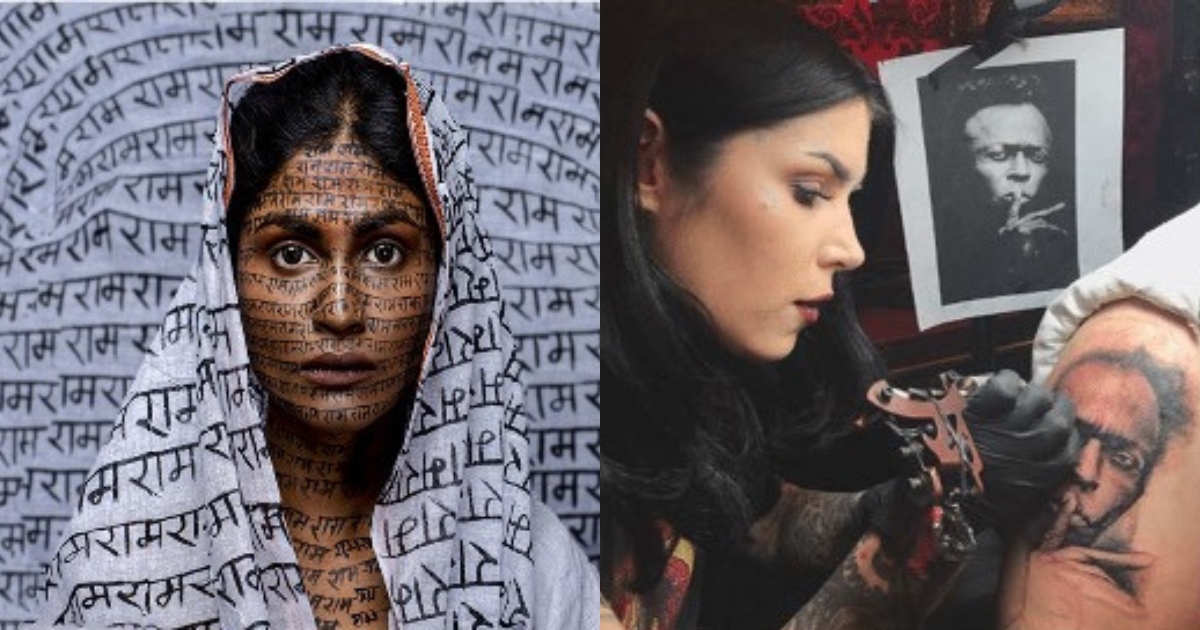Various communities used to ink their bodies as a cultural identity. Santhals in West Bengal, Baiga Women cultural tattoos in MP and Labyrinth Ritual in South India are some of examples. Have you ever heard about the Ramnami community of Chhattisgarh? Their struggle against caste discrimination is as spiritual.
In Sedlik v. Von Drachenber, Miles Davis’s tattoo was inked on the body of Blake Farmer by tattoo artist Kat Von D in 2017. Five years subsequent to the aforementioned period, a federal judge situated in Los Angeles has adjudicated that whether the matter constitutes an act of infringement or falls within the purview of fair use is a matter to be deliberated upon by a jury.
Tattoo artist Kat Von D’s lawyers asserted in court that her use of Miles Davis’ photo falls within the preview of fair use. Ultimately, the jury found no copyright violation in Kat Von D’s use of the photo. The jury ruled in favour of Kat Von D, finding that neither the tattoo nor three of her social media posts featuring the photograph infringed on Sedlik’s copyright. The posts were deemed fair use. The jury held that the tattoo is not substantially similar to the photograph of Miles Davis. Though a good outcome for the tattoo industry but there are many issues like fundamental rights of the person inscription tattoo on his/her body, that need to be cleared.
Tattoo’s under Indian Copyright Act
Under the Copyright Law that the creator of an art possesses economic and moral rights that allow the artist to use and commercialise of the art created. On the other hand, there are publicity rights of an individual. The right to regulate the commercial utilization of one’s name, personality and other markers of personal identity is known as publicity rights.
The conflict between the economic rights of tattoo artists and the human rights of the tattoo bearer is another challenge that was not the issue in the case. There is a need to strike a balance between safeguarding the rights of the tattoo artist and preserving the human rights of the bearer is imperative. Use of the copyrighted work is fair if the user transforms the work of the artist into a different work. In the case of Bill Graham Archives v. Dorling Kindersley Ltd., 448 F.3d 605, 607 (2d Cir. 2006), it was held that the use of tattoos on the body of the players in the videogame are of small size and difficult to observe so they are transformative. So, fair use doctrine under section 52 of the Act may take care of the issue to some extent. One way to address the conflict of overlapping rights between tattoo artists and tattoo bearers is to treat tattoos as works made-for-hire under Section 17 of the Copyright Act. This would give the economic rights to the tattoo bearer who commissioned the tattoo. However, this is a difficult proposition because tattoo artists are usually freelancers and not employees of the tattoo-bearers. This means that their relationship may not qualify as a contract of service under Section 17(c). As a result, tattoo artists would be the first owners of copyright in their work.
Copyrights v/s constitutional rights
In the case of Raj Rewal v Union of India, an architect in this case filed a petition to stop the demolition of a building he constructed, arguing that his reputation would be harmed by the shrinkage of his creative corpus. The court stated that Section 57 could not possibly envisage the right to object to the destruction of a structure, noting that the Copyright Act must be read coherently. While in the case of Amar Nath Sehgal v Union of India, the court expressed the urgent need to do a liberal interpretation of Section 57 of the Act, in its wider amplitude so that destruction, an extreme form of mutilation be perceived as an affect to his reputation as it reduces the volume of the author’s creative corpus. The reason behind the decision was the protection of the integrity of the work associated with the cultural heritage of the country. So, in the present case, if happened to be in Indian courts, the court may have differed from such views
Let us examine the issues through the lenses of theories of intellectual property.
Familiarity with personality theory
In the 21st century, tattoos hold an important position in body art. A person gets an impression on its body that is permanent and is visible to the whole outside world. In most cases, the tattoos have deep meaning for the person who gets inked and in many cases, it is also emotionally attached to the art inked and the meaning behind it. It would last for the life of the person if not removed, the person perceived it as part of his/her being.
The argument for the artist’s rights to the tattoo stems from the act of utilizing their skill to render the tattoo an extension of their own personhood. In essence, the creation process grants the artist rights over the tattoo, akin to the rights they possess over their own body. Against the personality theory, the importance of the rights of the person on who inked tattoos on his/her body can be discussed. Neither the artist, nor any potential copyright holder, possesses the authority to exert control over the body and, consequently, the personal liberty (a fundamental right) of the individual receiving the tattoo. It is crucial to note that the application of personality theory in this context is demonstrably inapplicable due to the inherent involvement of fundamental rights of another party. In the case Coleman v. City of Mesa (Ariz. 2012) Arizona Supreme Court held that tattoos are a form of “pure speech” and tattooing is a form of “expressive activity. Similarly, 9th U.S. Circuit Court of Appeals in Anderson v. City of Hermosa Beach (9th Cir. 2010) held that tattooing is an expressive activity and is protected under the First Amendment.
So, the interpretation of section 57 of the Act should be made accordingly as copyright cannot have an override effect on the fundamental right.
Familiarity with labor theory
The labour theory of property suggests that individuals have a right over the things they invest their labour in. Originally, John Locke applied this theory to land ownership. However, some scholars argue it can be extended to intangible property like artistic creations.
The labour theory supports an affirmative answer. It argues that the artist’s skill and creativity, invested in the tattoo, grant them ownership. Unauthorized use (infringement) would then violate their rights. Therefore, according to the labour theory, artists should have the right to prevent unauthorized use of their tattoos and potentially sue infringers. But in the present scenario, the fundamental rights of any other persons are also involved, and that makes the labour theory inapplicable here.
Conclusion
In order to protect economic rights and personality rights, India needs a strong precedent that would define the limited of extent of injunctive relief sought by the copyright holders while taking care of the infringer’s fundamental rights. Complete denial of the tattoo artist’s rights could discourage the exhibition of their artistic proficiency. Therefore, a comprehensive examination of the issue necessitates consideration from this perspective as well.
As new forms of expression are created, copyright law needs to be able to address the new problems that they create. However, the liberal way section 52 and fair use were interpreted by Indian Courts in the past, we can say that the copyright dilemma of the tattoo can be taken care. Still, as the law is not clear, there is a need for the legislature’s intervention for challenges like the enforceability of these rights once they are granted. It would be interesting to see how Indian courts would take care of such issues and stick a balance between the various rights involved.
Author: Kailash Chauhan

Kailash is working in the Trade Policy Division (TPD) of the Ministry of Commerce and Industries Government of India. The author has worked on the IP and technology part of the Trade Policy Review of various countries like the US, the UK, Japan and Brazil, etc. The author has done research work on the MC12 issues related to “Covid-19 vaccine IP waiver” and “Pandemic response”. The author was in the Indian team for MC12 and joined MC12 virtually. The author has been on the panel as an expert in an event organized jointly by UNCTAD in the year 2022 and 2023. His expertise area is IP, technology laws, e-commerce and digital economy. Kailash also has research experience in Technology transfer, e-commerce, Trade Policy Review (TPR), trade & development, etc. Kailash has also done research work in the India-UK FTA and India-EU FTA. Kailash has also done research work on the “policy space for developing ad LDCs”, UN’s “LDC Graduation”, UNESCAP’s “The Framework Agreement on Facilitation of Cross-Border Paperless Trade in Asia and the Pacific” and World Bank’s “B-ready project”.










